Last Chance to Catch NYC's Holiday Notalgia Train
We met the voices of the NYC subway on our nostalgia ride this weekend!


Years before the Roaring Twenties, Frank Woolworth built himself a fortune when he opened a store selling merchandise for spare change. His company, the F. W. Woolworth Company, pioneered the five-and-dime stores that became popular in the United States. With his fortune built off of nickels and dimes, he later built Winfield Hall for $10 million in Glen Cove, Long Island.
Designed by C.P.H. Gilbert, the house stood on a 16.4-acre property. The 56-room home boasted 48,000 square feet. 12 bedrooms, 9.5 bathrooms and 16 fireplaces were scattered throughout the home. Since Winfield Hall was completed in 1916, various owners have passed through its halls. However, it is being auctioned off next month with a projected sale price of at least $7 million. The property includes not only the mansion but also the sweeping lawns and a separate 15,000 square foot clock tower building being positioned as a garage for a private car collection.
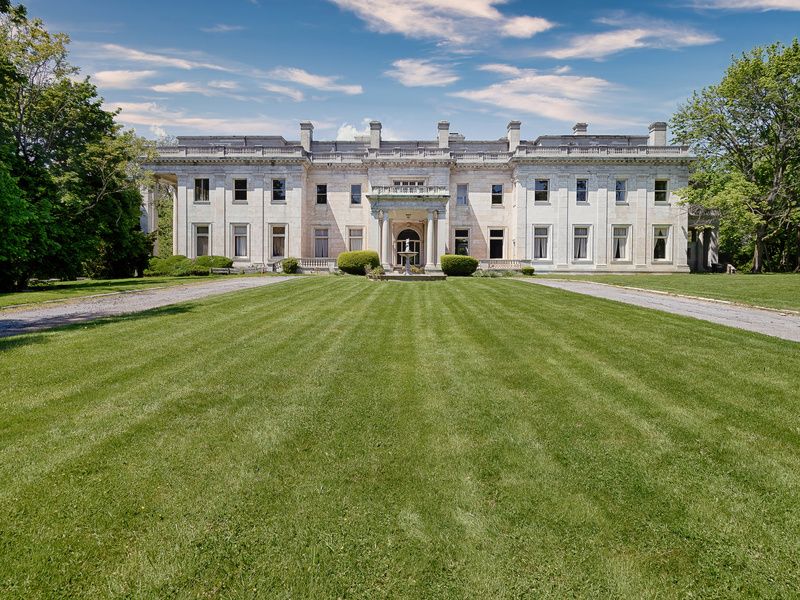
When Woolworth purchased the property in 1914, a mansion already existed on the 16.5 acres. This estate, completed in 1902 by C.P.H. Gilbert, was called the Humphreys Estate. Alexander Crombie Humphreys, a mechanical engineer, lived there with his wife Eva Guillaudeu until 1907.
Woolworth was never fond of the mansion, however. This raises suspicions about the origins of the fire that began either in the billiards room or the valet’s quarters in 1916. Razing through the house, the fire burnt the mansion to the ground, destroying millions of dollars worth of valuables inside. Following the fire, Woolworth already had plans for an estate to replace the old mansion. This new estate would be called Winfield Hall.
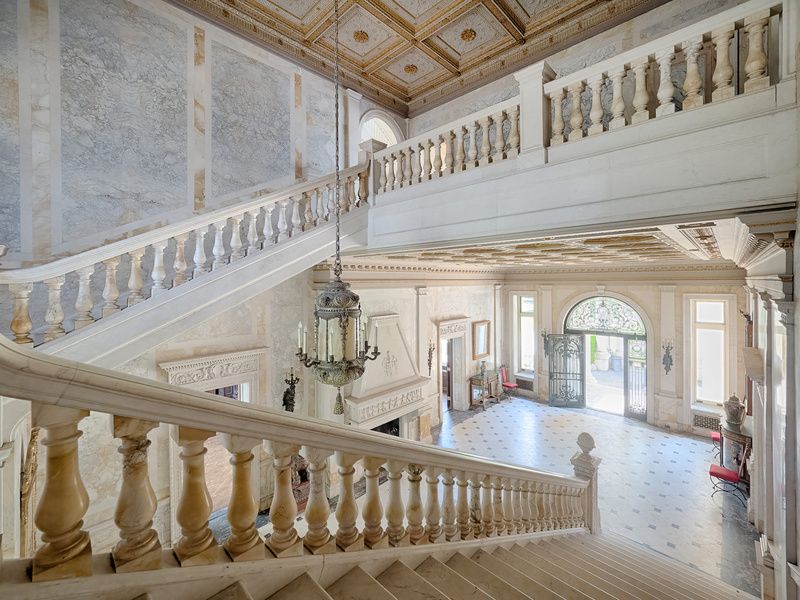
Not wanting the new mansion to fall prey to the same fate of the Humphreys Estate, Woolworth’s mansion is made mostly of marble. This includes a staircase entirely made of pink marble. The staircase cost $2 million dollars to make preceding the 1920s — this means Woolworth would have paid $48.5 million in the present day.
Winfield Hall was not the only property Woolworth commissioned. With his Five and Dime fortune, he commissioned the Woolworth Building in Manhattan and a few homes on 80th Street. Although a few homes remain today, the property at No 6. East 80th Street stands in beautiful condition. The floors, walls, and staircase within this home are marble just like Winfield Hall.
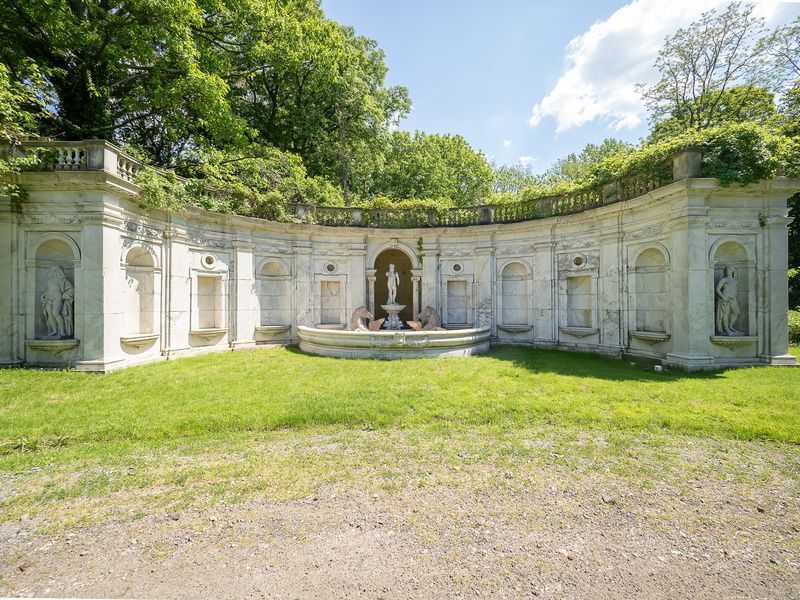
Despite Woolworth’s efforts to immortalize his mansion by using marble, a fire still destroyed portions of the home in 2015. After flames erupted at 10:30 a.m. on January 28, more than 100 firefighters arrived. Hailing from eight towns, these firefighters fought to put out a fire that stretched from the first floor to the attic.
Just like the fire that burnt down the original estate on the property in 1916, no one knows how the fire began. The home that once was a center for lavish parties has since been restored for the most part. The home has been on the National Register of Historic Places since 1979. Whoever purchases the mansion will still need to spend millions on renovations, as the second and third floors have been altered for other prior uses and the Clock Tower building is basically abandoned.
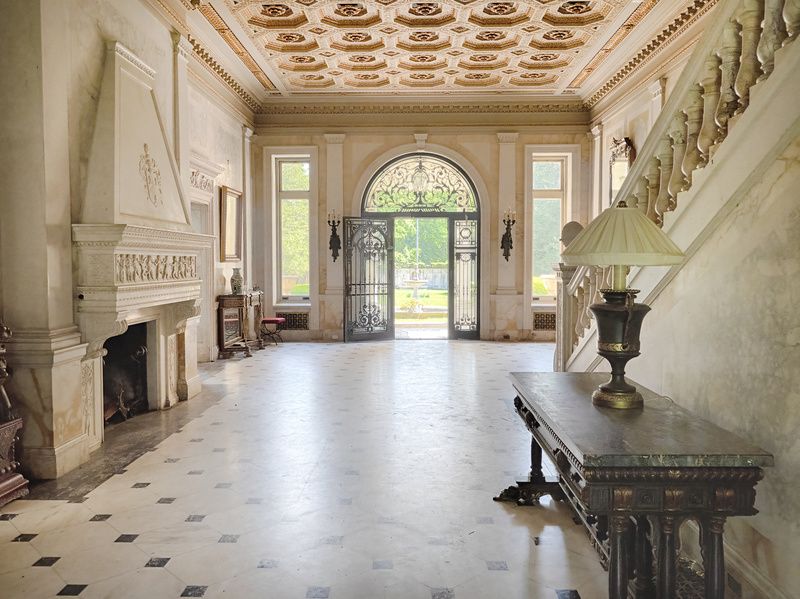
Woolworth believed himself to be the living reincarnation of Napoleon Bonaparte. He strove to embody the French leader in every aspect of his life. Not only was his bedroom an identical copy of Napoleon’s quarters at the Château de Malmaison, but his bed once belonged to Napoleon himself. This bed had a canopy with 14k gold decorations. He often spent time at Napoleon’s gold and red velvet throne as well.
Other than walking around in many uniforms previously owned by Napoleon, Woolworth also commissioned the construction of a marble replica of the Arc de Triomphe. The original arch, which is found is Paris, honors the victories of the French Army under Napoleon. Monica Randall, author of Winfield – Living in the Shadow of the Woolworths, lived in the home after hearing about supernatural activity within the mansion. In her book that recounts this activity, she notes movers could not find the home initially because they thought the arch she mentioned referenced McDonald’s twin arches.
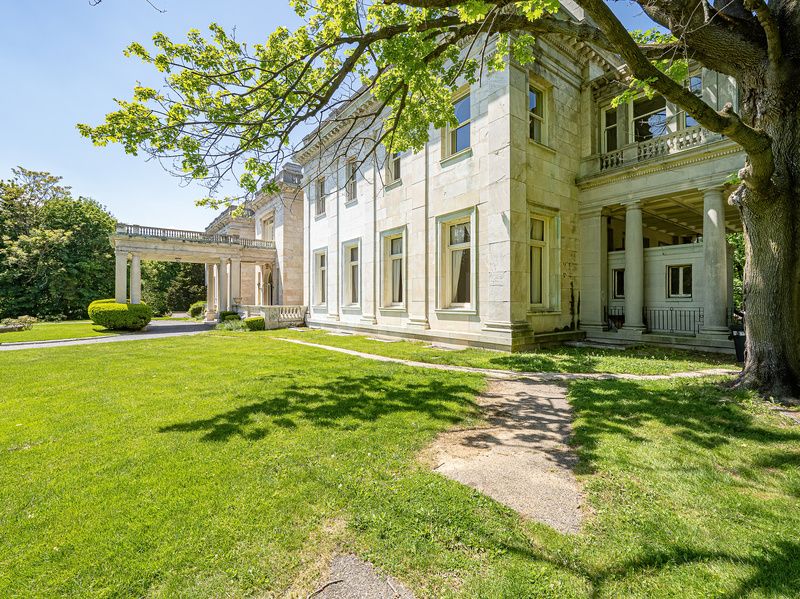
Considering Woolworth’s obsession with Napoleon, the period rooms that line the second floor of Winfield Hall fit his character. Some of these rooms honor the Ming Dynasty, the Elizabethan period, Louis XIV’s absolute rule, and Marie-Antoinette.
The Empress Josephine room housed Woolworth’s mistress. A secret passageway connected this bedroom to that of Woolworth. Woolworth’s wife lived in her own room that did not connect to her husband’s. In contrast to the elaborate Josephine room, her bedroom housed a single bed and rocking chair.
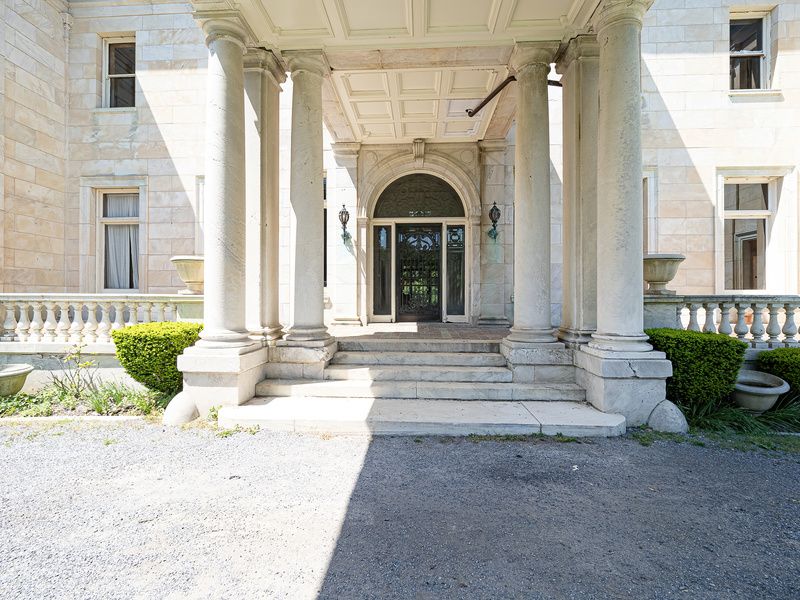
Despite the millions of dollars Woolworth spent on Winfield Hall, medical complications cut his time in the mansion short. Two years after the mansion’s completion, Woolworth fell ill with septic poisoning from an infected tooth. He died five days before his 67th birthday with an established five-and-dime dynasty.
Known to overlook aspects of his family life, Woolworth forgot to sign the most recent version of his will. As a result, when he died in 1919, all his net worth and assets went to his wife. However, dementia rendered her unable to use the property or money effectively. Winfield Hall and all of Woolworth’s fortune later went to Barbara Hutton, the daughter of one of Woolworth’s late children. Hutton then became one of the richest women in the world.
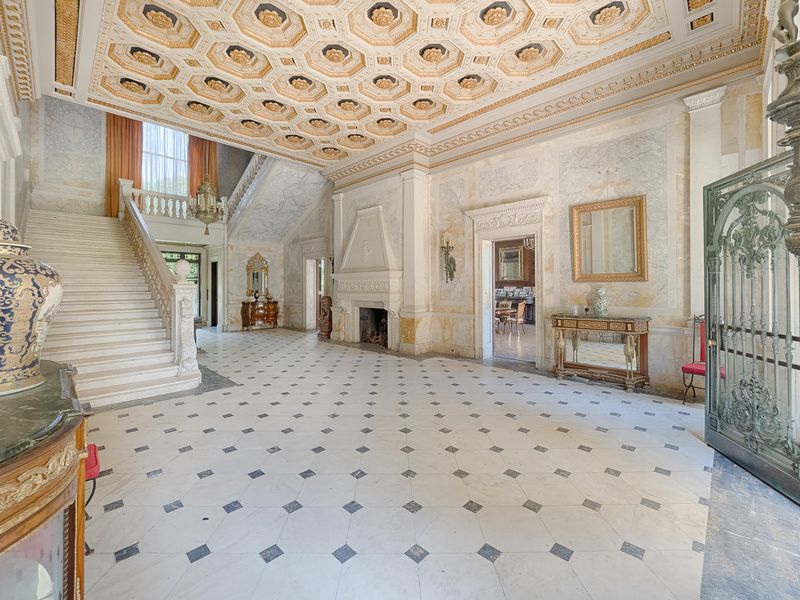
Following the decades when Julia Louise Parham Richard Samuel Reynolds, Sr. of Reynolds Wrap aluminum foil owned the home, Grace Downs, an esteemed school director, purchased Winfield Hall in 1963. She promptly turned the property into the Grace Downs Academy. This school for girls taught modeling, charm, and secretarial skills, as a modeling and airline stewardess school, until Downs sold it in 1976 to Martin T. Carey.
As 30 girls at a time learned in the mansion, they soon called it “Glamour Manor.” However, some moments were far from glamorous. Two occurrences of women staying in the Marie Antoinette Room sparked curiosity after their mysterious deaths. First, a secretary saw a crying woman in the room, and she later died of a heart attack. Later, a student brought her boyfriend to the estate, where they spent time in the same room. The student later died in a car accident.
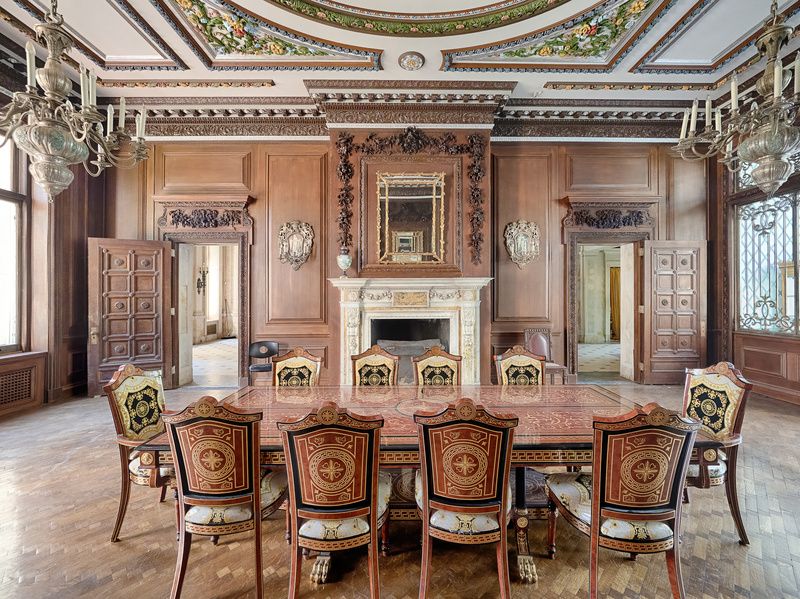
Woolworth, a man of luxury and prestige, needed a family crest. In the crest, he stands poised with a medieval helmet alongside his wife, who wears a knight helmet. The only visible aspect of her being is a string of pearls. Below them are their three daughters: Edna, Helena, and Barbara. Edna died in the Plaza Hotel in 1917. Her coroner, who had the surname Feinberg, declared an autopsy unnecessary. As a result, she officially died of suffocation from an ear disease, although many suspect she committed suicide. After discovering her husband had a mistress, she allegedly put on a lace dress and drank a vial of poison in her apartment at the Plaza Hotel. The same night of her death, it is rumored that a crack appeared across her face in the family crest.
Due to the various accounts of supernatural activity in the Marie Antoinette Room. many owners have resolved to lock the bedroom. Some say the door remained locked before the Reynolds family owned Winfield Hall because Edna died there instead of at the Plaza like records state. A multitude of deaths occurring either on the property or related to property owners has led to stories about supernatural activity at the mansion.
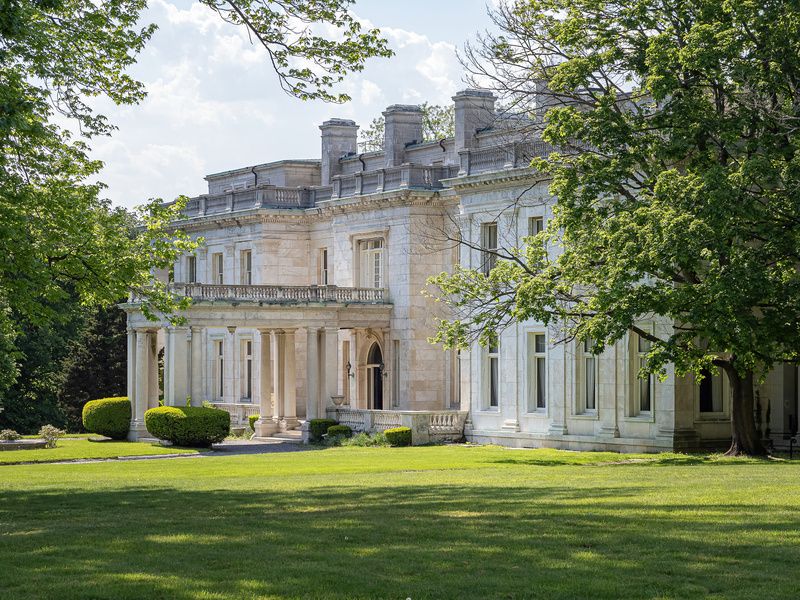
The most recent owner of Winfield Hall was Martin T. Carey, the younger brother of former New York Governor Hugh Carey. He made his fortune in the petroleum business and became an avid preservationist of Gilded Age mansions, owning and restoring properties on Long Island and Newport, Rhode Island.
Carey died in June 2020 and as part of his estate sale, both Winfield Hall and neighboring Cashelmara, the former estate of the daughter of New York banker William H. Porter (known originally as Bogheid) are on auction through his estate . The Cashelmara, situated right on Long Island Sound, contains a bowling alley and indoor tennis courts.
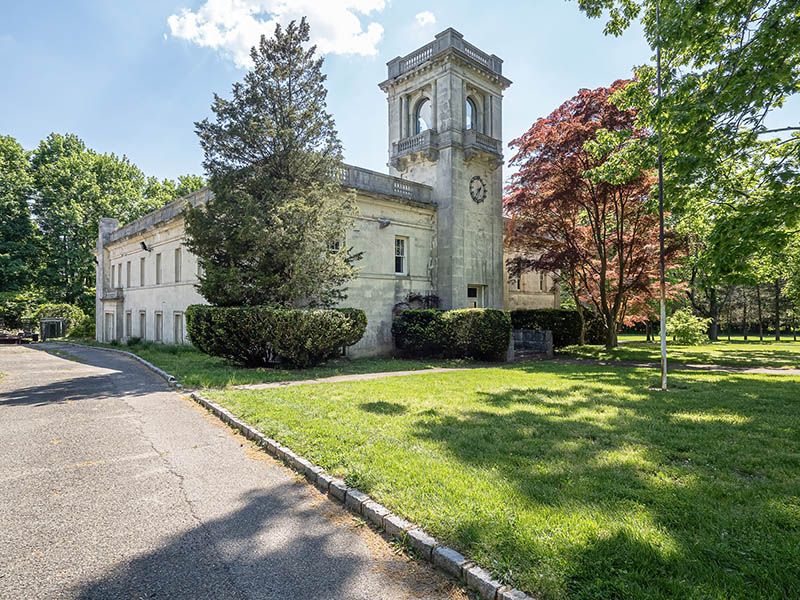
The mansion’s auxiliary clocktower building adds another 15,000 square feet building to the historic estate. At its peak, the clocktower served as staff residences, office space, an 18-car garage, and even a laboratory where Reynolds wrap was invented. The Reynolds family owned the property after Woolworth’s death. However, when new owners redecorated the mansion, they placed a clothes and furnishings into the structure, which eventually rotted away.
Next, check out more Gold Coast mansions of Long Island, including OHEKA CASTLE.
Subscribe to our newsletter